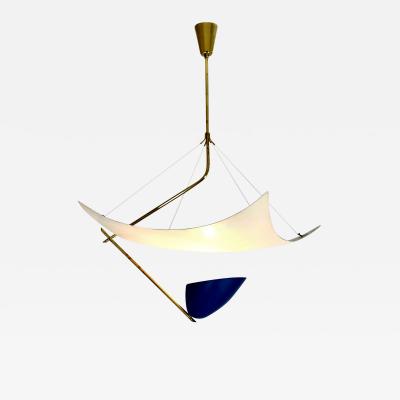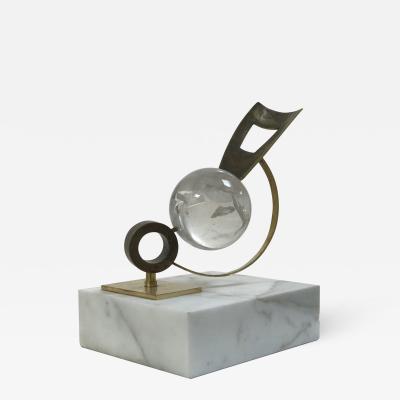A Deal in the Life of an Art Dealer: Returning Cultural Patrimony to Colombia
Art and antique dealers play a fundamental role in the art market, accounting for a large percentage of global art sales. Yet due to their low profile and focus on research and discovering great art for the right client, they often do not receive the same amount of international press as multi-million dollar auction sales. Consequently, for those outside the art trade, there is little known about the profession and often a misconception about the role of the art dealer. Not long ago, at an art exhibition presentation in Nyack, New York, a member of the audience quizzically asked Mark Waller, Director of Gallery Moderne, “Do dealers just sit around all day and wait for people to buy paintings?” This inquiry shocked Mark, an experienced dealer with more than forty years in the trade. His gallery had just concluded an international transaction with a Colombian public institution exemplifying the complexity of the art world and shedding light on the execution of a successful deal and this misunderstood occupation.
Most art deals are carried out over an extended time frame and involve various stages of research, logistic coordination and negotiation. “Every deal involves a unique skill set, however there was a particular satisfaction with this deal from having taken it from the absolute source to the final destination,” remarked Waller. The seeds of this year-and-a-half-long deal date back to the 2006 sale of the estate of Dorothy Deyrup, a talented local painter forgotten by the passage of time. Her surviving sister, Astrith, had moved Dorothy’s remarkably well-preserved oeuvre from the house, which was soon fractured amongst various dealers and auction houses in the lower Hudson Valley. Mark visited one of the estate auctions and at once noticed the local connection and quality of Dorothy’s work and, over the course of several years, he became avidly engaged in understanding her art, history, and career. The strong social commentary in her paintings heralded a full explanation of her and her family’s life and it came as no surprise to find out that she was a daughter of a local visionary, Alvin Johnson. In Mark’s dealings with Dorothy and Astrith’s art about a potential exhibition in August 2013, a small role of papers from the estate caught his attention. He reflected, “Upon unrolling the gently stained works of art, I was struck by the quality and beauty of these unusual landscapes. The printing process was at first unknown to me, but my experience told me that early topographical works might be of historical importance.” In the open market, dealers are reliant on split second reactions, but that intuition must be followed up with intellectual curiosity, discipline and verification of research. Mark convinced the beneficiary, an art enthusiast himself, to allow him to take away the mysterious works for further research.
While the prints were signed Enrique Price, a review of the artist websites and classic reference books using related keywords turned up practically nothing. After an exhaustive Google search over several weeks, using his limited understanding of Spanish, Mark discovered that these works depicted the Republic of New Granada, current day Colombia and Panama. Tantalizing images of watercolors appeared on his screen. After further and more focused research, Mark discovered that Henry Price, a British painter and musician hired by the Colombian Chorographic Commission, created the prints. This commission was tasked with researching the geography, natural resources, natural history, regional culture, and agriculture, as part of an effort to reconnoiter New Granada for investment and farming potential. The aquatints depicting the Colombian capital of Bogota were the culmination of Henry Price’s travels and observations during his sadly shortened life.
Mark subsequently found a small exhibition at a public institution in Colombia of Price’s watercolors and drawings from the 1850s that depicted the country’s landscapes, people and their customs. However, this Price exhibition did not include any vistas of Bogota or aquatints. These findings convinced Mark of the rarity of these pieces and their importance to Colombia, and he made the decision to employ a local expert to clean and mount them in protective individual matting. He then located the name of the exhibition’s curator and proceeded to track down her contact information. With the help of a fluent Spanish speaker, Gallery Moderne contacted the exhibition’s curator located in Bogota, who, though charming and knowledgeable, was reticent to impart too much information but promised to research and report back. After several indecisive months, the curator suggested to Mark that a Colombian public institution purchase the works and subsequently introduced him to the client via contacts at its cultural department.
Gallery Moderne compiled its research about the prints into a comprehensive presentation and over the course of the following months it became clear that there was indeed an interest in the works. The client requested that a qualified Colombian curator at The Metropolitan Museum of Art review the works in person. Mark gladly obliged and transported a large box packed with the aquatints to the curator’s apartment in New York City. Upon first seeing the pieces, the curator’s enthusiasm was palpable. Mark remarked, “My joy was completed by the curator’s strong understanding of the quality, condition, and visual impact of these works and the realization that these vistas of her home country were now lost forever.” Mere sheets of paper represented an extraordinarily accurate view into the past of what is now one of South America’s largest metropolises. At the end of the visit, the curator promised to report back favorably to the client and to encourage the purchase of these aquatints as a tangible way to preserve Colombia’s cultural legacy.
Following this meeting, the institution sporadically corresponded with Gallery Moderne about its interest in purchasing the works. Over the course of many months, Mark diligently explained the manufacture process, value, rarity and the opportunity factor through numerous communications with the client. Mark reflected, “I felt deeply that they belonged in their country of origin. This inspired me to push harder.” Finally, in late October 2014, after a second scheduled Board of Directors meeting, the institution sent Gallery Moderne a formal offer to purchase the works. Domestic politics, vacation schedules, and cultural differences can all have an impact on international art deals. While Mark was confused by the year-long postponement of the deal, he later found out that one of the reasons for the delay in the decision making process was the election cycle, which did not allow the organization to proceed with purchases for six months.
After several more months negotiating final details and the logistics of transporting the delicate works from New York State to Colombia, an official representative traveled to New York City to inspect the aquatints firsthand and possibly hand carry the pieces. Once seeing the works in person, she decided, based on their large size and fragility, to follow Mark´s suggestion to hire a professional carrier. Finally, a year-and-a-half after Mark first saw the mysterious role of papers, the aquatints arrived safety to Colombia. Mark commented, “It was a good day for Colombia” as the day of completion of this deal coincided with the international news that a truce had been signed in Colombia with the FARC. "It was satisfying to return these finished images to Colombia after a 160 years,” Waller stated. “Better late than never.”
The Perfect Postscript - 02/09/2018
Some years later a local realtor relisted the Deyrup House in Nyack, NY, the origin of the aquatints by Henry Price. This time, the house was fully restored and researched. Its original owner, amongst other fascinating facts, was listed as well. The owner, Mr. J. A. Bennet, it turns out, was at one time the U.S. Consul to Bogota, Colombia. A simple Google search turned up a well-written and sensitive article by this gentleman, of a journey through The Andes Mountains, and his travels in Colombia. It gave one a sense of a warm, compassionate and observant man.
I was delighted to forward this new information to the original curator, from Colombia, who had instigated the purchase of the aquatints by Henry Price. By return, in Spanish, we received an enthusiastic reply, as she knew well of Mr. J.A. Bennett. He was an integral gentleman in the community, and had opened the first photographic studio in Bogota in 1848, which is exactly the right date for this method of printmaking.
The mystery of their appearance in Nyack was solved. It also adds a fascinating piece of local history. The house is asymmetric, unusual, and fits well with the original owner as an enlightened artistic spirit. Its exquisite location, on the banks of the Hudson River, would surely attract a photographer’s eye with a refined taste for expansive beautiful landscapes. The unusual story of Nyack, NY and Bogota, Colombia turns full circle for now.
Mark Waller
Mark Waller and Stephanie Arvey are director and gallery manager, respectively, of Gallerie Moderne.































